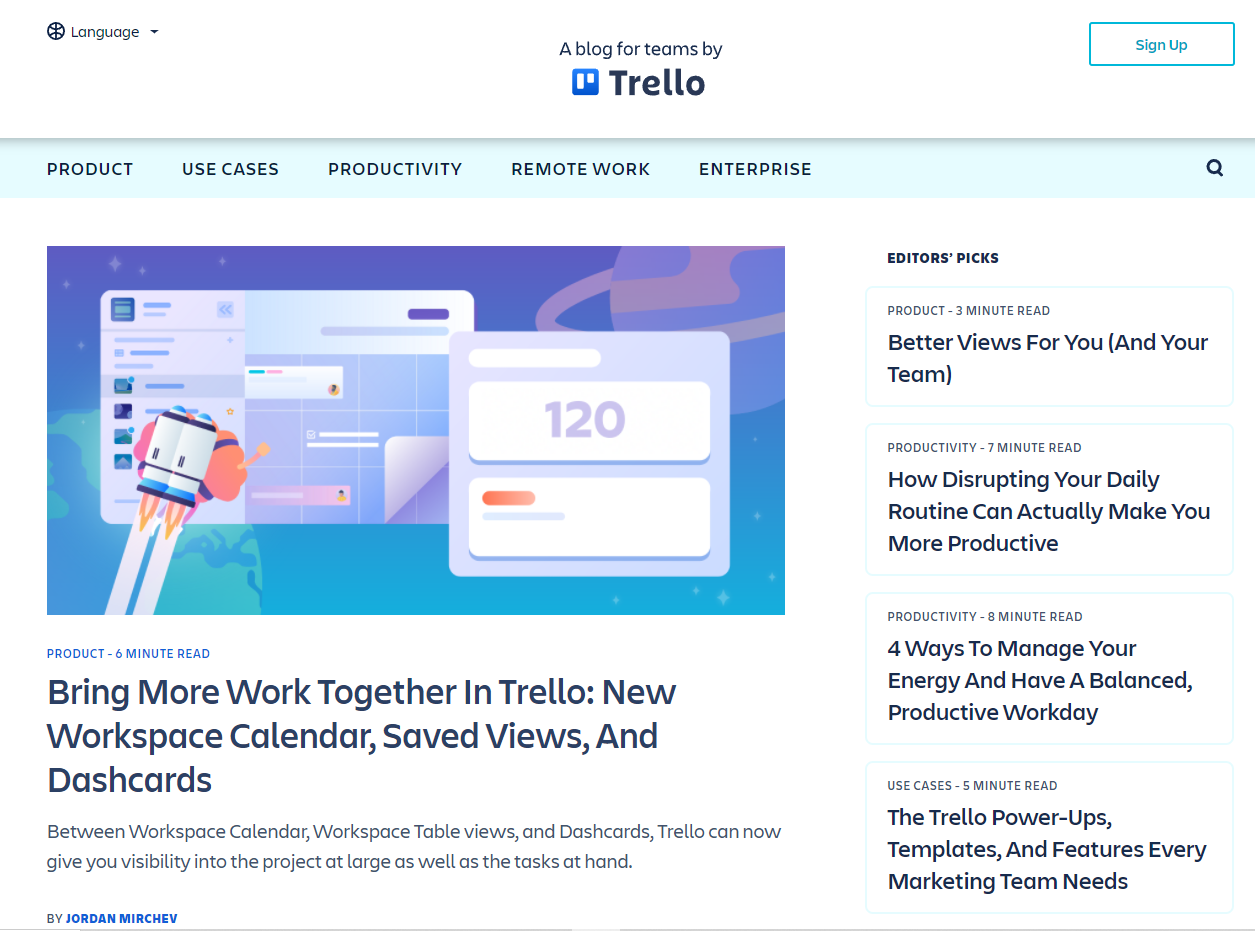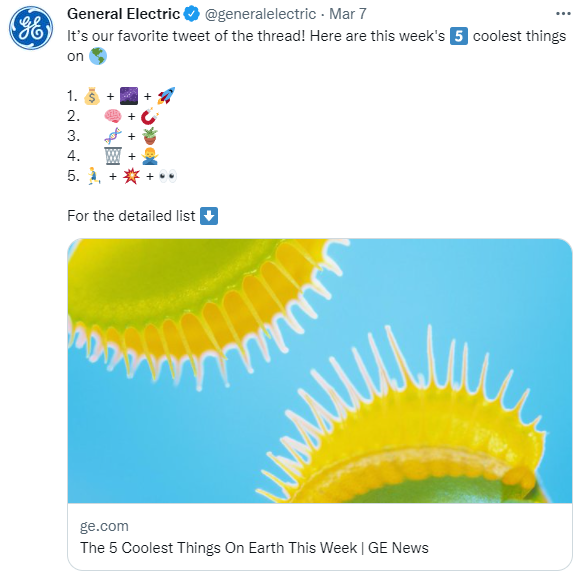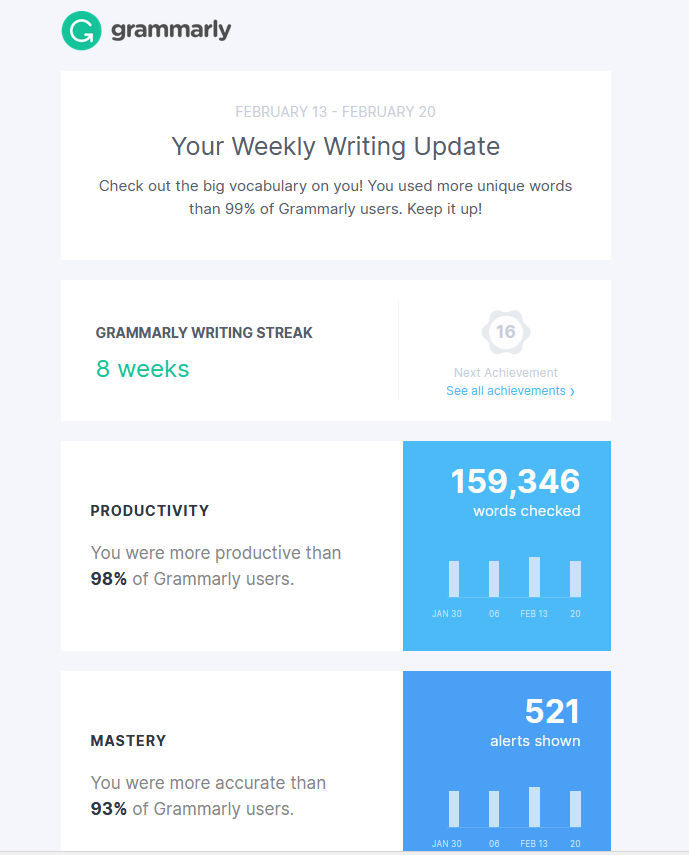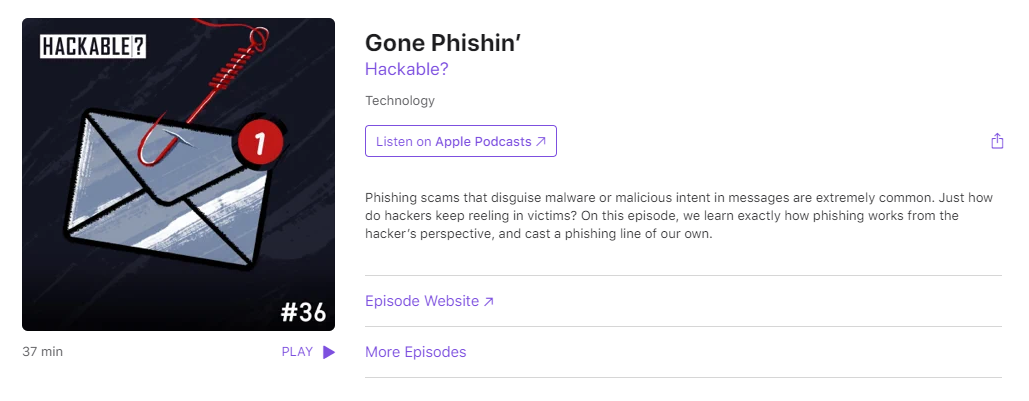Your brand has a story, and the business-to-business (B2B) marketing space is your chance to tell it. Don’t be humble: Your B2B brand is awesome, and you want to shout it from the rooftops.
But like all stories, your B2B marketing can only shine in a format that will do it justice.
Have you ever seen a favorite book adapted into a deeply flawed movie, or a childhood cartoon looking downright creepy in live-action? That dismay and disconnect will haunt your customers if you choose a B2B marketing channel that doesn’t fit your intended message. They might walk away with the wrong idea about your company’s purpose, goals or values.
Your brand deserves better.
Here are 5 marketing channels to choose from — and how to design messaging that fits just right.
Choosing B2B Marketing Channels
Imagine you’re a cheery, wide-eyed kid in a candy shop (helicopter hat optional). Naturally, you want to try everything — but all you have is a little spending money left over from last month’s allowance.
That’s how it feels to be a B2B marketer trying to choose between all these incredible distribution channels.
The trick is to choose channels that will put your brand, story and offering in the best possible light. That way, you get the most out of your advertising budget and make a memorable impact on your target audience along the way. Of course, that doesn’t mean you always have to stick to what you know; in this B2B marketing candy store, there are always new things to try.
To strike the perfect balance between novel and familiar and end up in all the right marketing channels, you’ll need to bring a few key pieces of information to the table:
Know Your Story
Remember that brand story we mentioned earlier? It’s back, and it’s at the top of this guide for a good reason: It will drive every marketing decision you make.
Whether you realize it or not, you know exactly what your brand story is about. It’s why you got into this business in the first place. However, to convey all that information to a buyer, you’ll need to polish a few details:
- Positioning: When you’re positioning your brand narrative, you’re essentially choosing a genre. If you started in a garage like Mattel, Hewlett-Packard or even the Walt Disney empire, you might be playing up the rags-to-riches storyline. Or maybe your brand has been handed down through generations, in which case you’d be in league with famous slogans like “SC Johnson: A Family Company.”
- Tone and voice: In storytelling terms, tone and voice are the ways in which a narrator expresses the content. Say you’re narrating “Little Red Riding Hood” to a group of children; you’d probably use a fun, playful tone and voice to match the fairytale. Tell the same story to a bunch of wolf-pups, though, and your solemn delivery might act as a warning against identity theft. The same is true for your marketing content: Tone and voice create meaning, which means they need to be tailored to your audience.
- Value proposition: Why are you telling this story? Why should your customers pay attention when they’ve got their own brand stories to craft? Determining your value proposition will help you shape, refine and deliver marketing content that catches your audience’s attention.
Know Your Message
Knowing your brand story is different from knowing your brand message. While a story encompasses everything your marketing needs to say, a message communicates 1 angle on that narrative at a time depending on who your audience is.
Say you sell multifunction printers. Your story might be about how every company must have one of these amazing machines — but your message changes depending on what your intended goal is.
If you’re trying to sell printers to startup businesses, your message could be about how these machines support growth and protect fragile budgets. On the other hand, if you want attention from enterprise companies, your message might focus more on how multifunction printers help manage hundreds of users and incredibly complex workflows.
Know Your Audience
As you consider your B2B marketing channel options, remember who your target audience is. They’re the ones you’re reaching out to — and if you do your job right, they’ll be reaching back.
To establish that connection with current and potential customers, ask questions like these:
- What industries are they in?
- What are their pain points?
- What makes them trust a B2B company like yours?
- What types of marketing material or content would they find valuable?
- Which channels do they pay attention to for social, news, education or entertainment purposes?
Know Your Strengths
We all have strengths. That’s why I’m writing about B2B marketing, you’re reading about B2B marketing and neither of us is professionally juggling chainsaws.
As a B2B marketer, it’s your job to find out what those strengths look like for you. If you’re really enthusiastic about obscure syntax rules, great — you might be a perfect fit for content writing. Convinced you can change the world in the span of 280 characters? You’re a born social media marketer.
Keep in mind that you can always outsource your marketing content creation — but whatever comes naturally to you is likely the approach that will best capture your brand’s essence.
Know Your Options
There are all kinds of marketing options out there. Nobody has enough fingers and toes to count them all, so here’s an easier way to break it down:
- Traditional marketing: Cold calls, direct mailing campaigns and brochures are part of a traditional marketing approach. Simply put, if it’s not on the internet, it’s considered “traditional.”
- Digital marketing: All the biggest advertising buzzwords — content marketing, social media marketing, inbound marketing and even the older but still relevant email marketing — are digital. They might be the newer kids on the block, but they’re a big deal.
Now, some marketing companies might tell you that traditional marketing is dead. Ignore them. Take, for example, the cold call — which, while possibly inefficient by some standards, may still be an effective way to create valuable connections with certain audiences. That means the best B2B marketing strategy will likely make use of both digital and traditional channels.
Subscribe to
The Content Marketer
Get weekly insights, advice and opinions about all things digital marketing.
Thank you for subscribing to The Content Marketer!
5 B2B Marketing Channels to Try
Time for the main event: exploring some of our all-time favorite B2B marketing channels. Here are a few options for you to sink your advertising teeth into:
1. Search Engine Marketing
Search engine marketing (SEM) is basically a performance art — but in this case, your “audience” is actually full of search engines. That’s right: To use this particular marketing channel, you need to get the fickle attention of Google, Bing and their siblings. Now, that doesn’t mean you should forget about your actual customers; the goal is to appeal to search engines and create value for customers. That can be done in two ways: organic and paid SEM.
When you take the organic approach, you use search engine optimization (SEO) strategies to create blogs, landing pages and other content that fits nicely into search engine algorithms. This helps you rank higher on the SERP, or search engine results page — which, in turn, means customers searching for relevant keywords and topics are more likely to stumble upon your content like finding a gold nugget in a river.
Now, if that gold nugget was purposefully placed right in front of them and illuminated with a spotlight or two, that’s paid SEM. This process involves ads that show up at the very top of the SERP and bring users directly to your product or service page — for a price, of course.
There’s a lot more to explore in terms of search engine marketing, but hey — you have to save time to explore the other options, right?
2. Content Marketing
Content marketing is, perhaps, the biggest jewel in the digital marketing crown. It’s all about creating content your customers will find valuable — whether that’s a snazzy infographic, an embedded how-to video or even a blog post about must-try B2B marketing channels (sound familiar?).

Generally speaking, “content marketing” is an umbrella term that includes social media, email, video and even inbound marketing efforts. Basically, if content is involved, it’s content marketing.
Of course, you don’t need to cram every single marketing channel into this approach. B2B content marketing can be as simple as building a high-quality blog on your website. Take, for example, Trello. This productivity app calls its content library “a blog for teams,” and the material you’ll find there is rich in B2B wisdom.

3. Social Media Marketing
As a B2B company, you have a wealth of ways to utilize social media. You can use this for both marketing (organic social) and advertising (paid social) purposes. Among B2B marketers who use organic social media as a marketing channel:
- 96% use LinkedIn.
- 82% use Twitter.
- 82% use Facebook.
- 62% use YouTube.
One example we’re particularly intrigued by is General Electric’s Twitter page. As this Tweet shows, GE knows how to leverage the platform’s limited character count to share content B2B customers will find interesting — even if you do have to pull out your emoji dictionary to decipher the exact meaning. (Notice they’re also driving traffic to their blog, which makes this a perfect marriage between social media and content marketing.)

4. Email Marketing
Email marketing is a great way to stay in constant contact with your customers — and to make your budgeting bucks go as far as possible. In fact, email lists with less than 500,000 subscribers can see an ROI of $33 for every $1 spent. Meanwhile, a list of more than 500,000 subscribers could generate an ROI of $42 for every $1.
That’s not to mention the vast opportunities presented by email marketing. Here are just a few things to try:
- Send different emails to different segments of your audience.
- Enable specific user actions, like creating an account or adding an item to the cart, to trigger follow-up emails.
- Use emails to bring attention to your brand’s product or service offerings.
- Send personalized offers depending on a user’s place in the customer journey.
One great example of email marketing at work is the Grammarly Insights email. This little beauty shows up in your inbox every week, providing an in-depth analysis of how you used the tool and what your writing habits are. (Not to brag, but I write more unique words than 99% of Grammarly users.)

5. Interactive Marketing
“Wait a minute,” you might be thinking, “didn’t we already cover interactive marketing when we talked about social media?”
It’s a question to which I would answer, “You’re absolutely right.” The thing is, interactive marketing can open doors beyond Tweets, likes and post shares. Presentations, webinars and podcasts all give your audience the chance to send in questions or even have live discussions with your experts.
Better yet, this type of content has 3 lives — and, thus, 3 ways of creating value for your business:
- The first life, which occurs before the content goes live and is used to generate hype around the upcoming session, your brand and your offering.
- The second life, which is when you live-stream your content to engage with viewers in real-time.
- The third life, when you adapt recorded content into embedded videos, gated assets, blog posts and other content to drive traffic and intrigue any potential B2B buyer.
A stand-out example comes from security software company McAfee. The “Hackable?” podcast covers facts and tips for any individual, B2C or B2B company with cybersecurity questions.

Notice that this example uses a pun. That means 1 of 2 things: Either puns are critical to B2B marketing, or creative, eye-catching content can be uniquely designed for any vertical, marketing channel or topic.
I don’t know about you, but I suspect it’s the latter.
Creating B2B Marketing Content
Now that you know what your B2B marketing channel options are, it’s time to roll up your sleeves and create — or plan, outsource or daydream about — some content.
Here are a few tips to keep in mind:
Align Your Messaging With Your Marketing Channel
Every channel has its own “language,” and if you don’t start speaking that language, your content won’t resonate with users.
For example, social media posts are short-form, often lighthearted and tend to make smart use of visuals like GIFs or emojis. So, if you have an in-depth thought leadership piece about the state of B2B marketing in the modern world, save that for your blog.
Keep in mind, however, that content can always be adapted to fit a different marketing channel. That means you can take your thought leadership piece, pull out the most important points, and bam! — you have an infographic that directs back to the full blog post. Plus, this relationship can be highlighted on social media using the channel’s unique language: “Don’t have time for a full blog post? Neither do we. Check out our infographic here.”
Leverage Industry Events
Conferences and industry events offer a great opportunity to build fresh content. Try approaches like these:
- Send emails to invite users to your booth at an event.
- Livestream your presentations at industry conferences.
- Write blogs summarizing each day of a large-scale event.
- Use social media to create hype around your arrival — for example, a Tweet saying, “Hello, Los Angeles!” or “Houston, here we come.”
Embrace User-Generated Content
No matter what type of B2B company you are, your customers are creators. Maybe they create masterpieces using your photo editing software, build jaw-dropping spreadsheets with your collaboration platform or tell beautiful stories about their experiences with your brand. That’s good for them, but it’s even better for you.
Why? Well, the truth is that advertising with user-generated content is a win-win in the B2B marketing space. Putting user content on social media shows potential customers what your brand can do, and at the same time, it acts as advertising for your existing customers’ companies.
Besides, everyone loves a little recognition for their hard work.
Optimize for Mobile
It’s not 2010 anymore, people. There are no excuses for websites, blog posts, infographics, embedded videos or any content that can’t be viewed properly on a mobile device. Your content is awesome, so take the time to make sure everyone can enjoy it.
Evolve With Your Audience
There’s an interesting relationship between audiences and B2B content creators. Sometimes customers call the shots, telling you what their expectations are and what they want from your company. Other times, you provide something unfamiliar yet incredible — and suddenly, your audience realizes that’s exactly what they wanted all along.
That’s right: We’re looking at a chicken-and-egg situation here.
The best way to handle this is to make sure you’re never just the chicken or just the egg. Respond to shifts in customer expectations, sure, but don’t be afraid to introduce fresh marketing content or techniques that will make them say, “I never realized I needed this in my life until you showed it to me!”
Stay Current
The final content creation tip here is to stay current at all costs. (Okay, maybe not all costs, but you get the picture.) Here’s how to make it happen:
- Update your content and messaging regularly.
- Reoptimize existing content for maximum SEO value.
- Stay up-to-date on current marketing trends.
- Review your performance across different B2B marketing channels to see where your strengths and weaknesses are.
Go Forth and Create
With 5 must-try marketing channels to explore and a host of tips to try, you’re probably chomping at the bit to get started. Here’s one last piece of advice:
Tell your story.
Whatever your brand is about — whatever it means to you — this should come through in your marketing. Your customers love their own companies, and if they feel that love from you too, they’ll be right at home as part of your audience.
Go forth and create, storytellers — and if you need a little help along the way, our newsletter can be the ace up your sleeve (or in your inbox).





